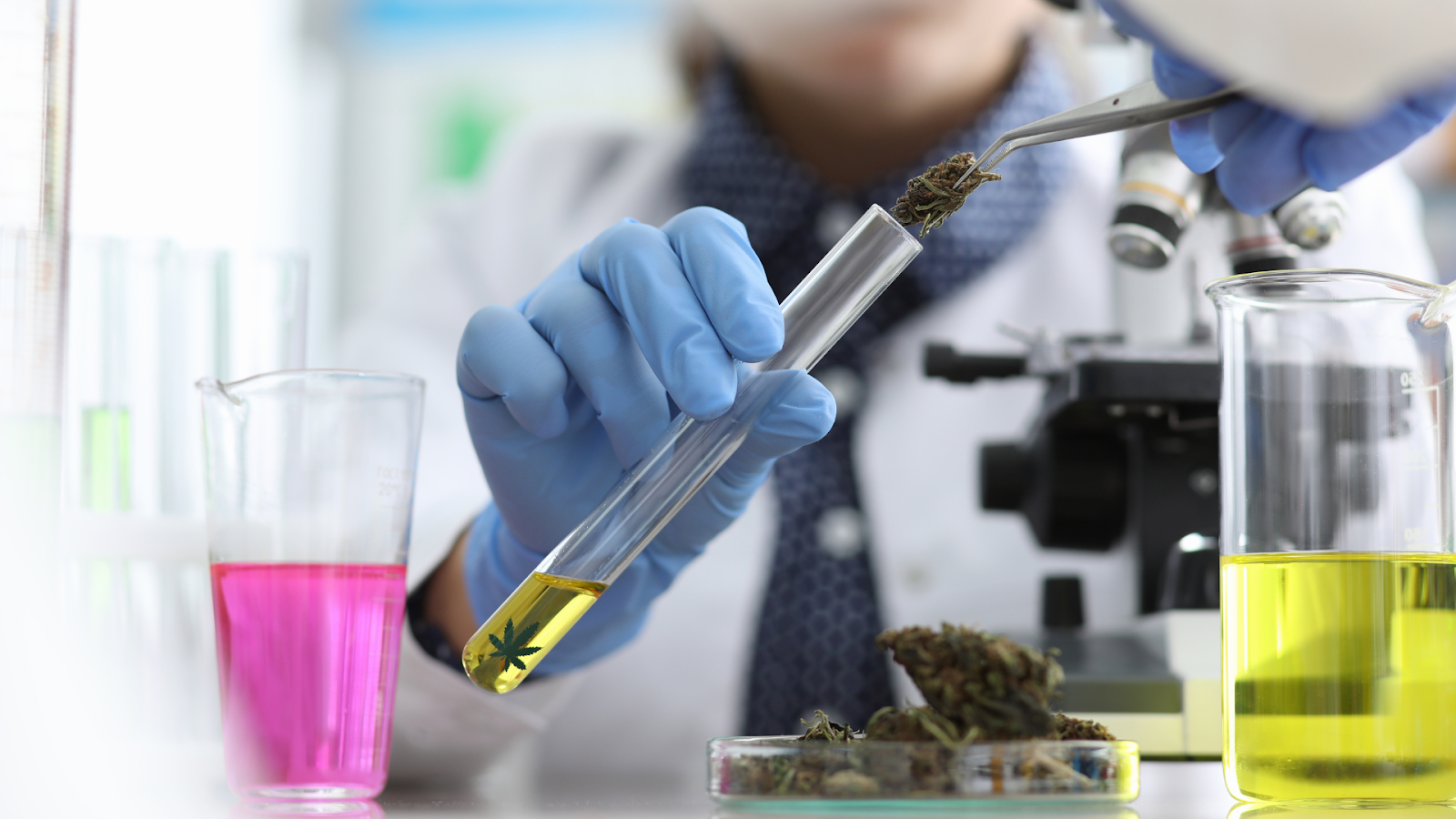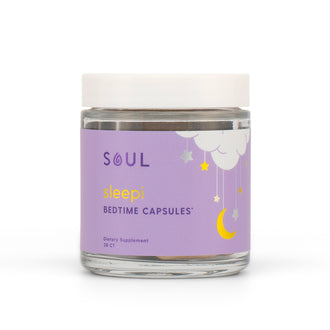Key Takeaways:
- Cannabicyclol (CBL) is a lesser-known cannabinoid: Derived from the degradation of cannabichromene (CBC), CBL is a non-psychoactive compound found in the cannabis plant. Its effects and benefits are less understood compared to CBD and THC, highlighting the need for further research.
- Potential benefits and applications: Preliminary studies suggest that CBL may possess anti-inflammatory and anti-microbial properties. However, due to limited research, these potential benefits are not yet fully confirmed, and the exact effects of CBL on the human body remain to be fully elucidated.
- Legal status and usage considerations: Like other cannabinoids, the legal status of CBL varies by jurisdiction. Consumers interested in exploring CBL should start with low doses and consult healthcare providers, especially if they have underlying health conditions or are taking other medications. The possibility of combining CBL with other cannabinoids may enhance its effects, but this should be approached with caution until more is known.
Cannabicyclol, or CBL, is a cannabis compound that has flown under the radar in the shadow of its more famous counterparts, CBD and THC. Despite its lower profile, CBL shares similar origins, deriving from the cannabis plant, but it is less studied and understood compared to other cannabinoids. Early research suggests that CBL could have unique properties and potential therapeutic benefits that are distinct from those of its more popular relatives, highlighting the need for further investigation into its effects and applications. As we strive to understand the full spectrum of cannabis's capabilities, it's important to discuss these less prominent elements to uncover their possible benefits and applications.
Experience the SOUL Difference
Ready to Transform Your Life? Embrace the SOUL lifestyle now and start your journey to enhanced well-being! |
Understanding Cannabinoids
Cannabinoids are a class of chemical compounds naturally found in the cannabis plant. These compounds interact with the human body's endocannabinoid system, which plays a crucial role in regulating various physiological processes, including mood, appetite, pain sensation, and memory. While THC and CBD are the most well-known cannabinoids, over a hundred others exist, each with unique properties and effects. It is fundamental to understand cannabinoids to comprehend the diverse therapeutic potentials of the cannabis plant.
The Role Of Lesser-Known Cannabinoids
While CBD and THC dominate the spotlight, lesser-known cannabinoids like CBL, CBG, and CBN contribute to the entourage effect — a theory suggesting that cannabis compounds work better together than in isolation. These minor cannabinoids are gaining interest for their potential medical benefits, distinct from the psychoactive effects associated with THC.
CBL’s Chemical Structure And Origin
Derived from the degradation of cannabichromene (CBC), CBL is formed when cannabis plants are exposed to light or stored for prolonged periods. Its chemical structure is distinct from that of CBD and THC, leading to different interactions with the body's endocannabinoid system. Unlike THC, CBL does not have significant psychoactive effects, making it more akin to CBD in that respect. However, the exact effects and benefits of CBL are less understood due to limited research.

Potential Benefits Of CBL
Despite its less prominent status in cannabinoid research, preliminary studies on CBL hint at several potential benefits. Early laboratory tests suggest that CBL may possess anti-inflammatory and anti-microbial properties. However, it's important to note that most of the current understanding comes from in vitro studies (conducted outside of a living organism) and there is a significant gap in clinical research involving human participants.
Potential Health And Therapeutic Benefits
Expanding upon the fundamental research, CBL could potentially contribute to treatments for conditions involving inflammation and bacterial infections. Given its structural similarities to other cannabinoids known to relieve pain and reduce inflammation, scientists are eager to explore whether CBL could offer similar benefits without the psychoactive effects associated with THC. Furthermore, if CBL's anti-microbial properties are confirmed through future studies, it could become a valuable tool in fighting antibiotic-resistant bacteria.
Legal Status And Safety Considerations
The legal status of CBL typically follows that of the cannabis plant and varies by jurisdiction. In regions where cannabis is legal for medical or recreational use, CBL is likely also legal. However, since it is a less studied compound, its specific legal status may be unclear, and consumers should verify local laws before proceeding. Safety considerations for CBL are also yet to be fully established due to the lack of extensive research. As with any cannabinoid, individuals should approach use with caution and consult healthcare providers, especially if they have underlying health conditions or are taking other medications.
How To Use CBL
Available Forms And Methods Of Consumption
CBL can be found in various forms, mirroring those of more common cannabinoids like CBD and THC. These include oils, tinctures, edibles, and topical applications. The choice of consumption method can affect the onset and duration of effects, with inhalation offering quicker onset but shorter duration compared to edibles, which provide a delayed but prolonged effect. Since CBL is not as commonly available as CBD or THC, consumers might need to look specifically for products labeled as containing a full spectrum of cannabinoids or consult with specialized dispensaries.
Recommended Dosages And Considerations
Due to the limited research on CBL, there are no well-established dosage guidelines. Consumers should start with low amounts and monitor their body's response, gradually increasing the dosage if necessary while remaining mindful of potential side effects. It's important to consult with a healthcare provider before beginning any new supplement regimen, especially for individuals with pre-existing health conditions or those taking other medications.
Combining CBL With Other Cannabinoids
The entourage effect suggests that combining multiple cannabinoids can enhance their overall therapeutic effects compared to using them in isolation. Consumers interested in CBL might consider using it in conjunction with other cannabinoids like CBD or CBG to potentially amplify benefits and tailor the effects to their needs. However, the efficacy and safety of such combinations are not yet fully understood, and users should proceed with caution, informed by available research and professional advice.
Ongoing Research On CBL And What It Promises
The future of CBL research looks promising as the scientific community continues to unveil the mysteries of lesser-known cannabinoids. With ongoing studies, there is potential to discover new therapeutic uses for CBL, particularly in areas where current treatments are inadequate. If CBL is proven to offer unique health benefits, it could lead to the development of new, targeted treatments for a range of conditions, contributing to the growing acceptance and integration of cannabinoids in mainstream healthcare. Furthermore, with the legalities surrounding cannabis changing constantly, there may be increased funding and interest that could lead to more comprehensive studies, shedding light on CBL's full spectrum of benefits and applications.

Final Thoughts
The exploration of cannabicyclol (CBL) stands as a testament to the untapped potential lying within the lesser-known compounds of the cannabis plant. While CBL may not currently share the limelight with CBD or THC, the ongoing research and growing interest suggest that this could change in the future.
We encourage readers to approach this emerging field with curiosity and caution as we continue to uncover cannabinoids like CBL. We hope this article has provided a clear and informative overview of it, empowering you to make informed decisions about incorporating this and other cannabinoids into your wellness routine.
Read also:
- CBG: The Cannabinoid With Surprising Benefits
- RSO: The Ultimate Cannabis Extract
- THC-X: A New Compound To Know In Cannabis
Frequently Asked Questions
Does CBL produce a high?
CBL is non-psychoactive, not producing a high, making it different from other cannabinoids known for their psychoactive properties.
How is CBL produced?
CBL is produced through the degradation of CBC when exposed to environmental factors like sunlight, heat, or acidic conditions.
How does CBL interact with the body?
No current evidence suggests CBL interacts with the body's cannabinoid receptors, CB1 or CB2, making its effects unclear.
Can CBL help with sleep?
CBL might indirectly support better sleep through anti-inflammatory properties, yet conclusive benefits require further scientific investigation and research.
Is CBL found in all cannabis strains?
Only trace amounts of CBL are found in cannabis strains, with higher levels possibly in aging strains rich in CBC.
Can CBL be used medically?
While CBL has potential medical benefits, the lack of comprehensive research limits confirmation of its effectiveness in treatments.
How is CBL consumed?
Consumption of CBL typically involves cannabis-derived products, varying based on the format of the product being used.
Does CBL help with pain?
CBL's effect on pain is speculative, based on its similarity to cannabinoids like CBC and CBN, but remains unproven.
Is CBL psychoactive?
CBL is classified as non-psychoactive, distinguishing it from other cannabinoids that affect mental state or consciousness.
How much CBL should I use?
Due to insufficient research on CBL, there is no established dosage guideline, emphasizing the need for further studies.
Sources:
- Crombie, L., & Ponsford, R. (1971). Synthesis of cannabinoids by pyridine-catalysed citral–olivetol condensation: synthesis and structure of cannabicyclol, cannabichromen,(hashish extractives), citrylidene-cannabis, and related compounds. Journal of the Chemical Society C: Organic, 796-804.
- Vree, T. B., Breimer, D. D., Van Ginneken, C. A. M., & Van Rossum, J. M. (1972). Identification of cannabicyclol with a pentyl or propyl side-chain by means of combined as chromatography—Mass spectrometry.
- Kane, V.V. (1971). Structure of cannabicyclol, a detailed NMR study of a synthetic analog. Tetrahedron Letters, 12, 4101-4104.
- Aziz, M., Rehman, H., Iqbal, A., Nawaz, A., Hussain, M., Siddique, T., Sehgal, S.A., & Sajid, M. (2023). Exploring the Therapeutic Potential of Cannabis Constituents in Parkinson’s Disease: Insights from Molecular Docking Studies. bioRxiv.
- Burstein, S. (2015). Cannabidiol (CBD) and its analogs: a review of their effects on inflammation. Bioorganic & medicinal chemistry, 23(7), 1377-1385.




